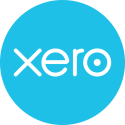How to Create a Budget for Your Business in 5 Simple Steps
By: Shay James

Budgeting can be challenging for anyone, and is perhaps even more so for busy creatives who own digital creative agencies. I get it – you would rather be focusing on delivering great products and services than tracking revenue and expenses.
But if you’ve ever experienced the headache of having too many expenses come at once – and not enough cash in the bank to cover them all – you know you need a business budget. Or maybe you know you’re missing out on financial opportunities for your business, simply because you don’t have a lot of clarity regarding your business finances.
Luckily, you don’t have to be a spreadsheet guru to create a simple business budget.
How a Business Budget Makes Your Life Easier
A good business budget clarifies the financial health of your business so you can take action to correct any missteps that may be occurring. A business budget also ensures that your monthly expenses will always be covered and reveals opportunities to develop strategies that will help you reach new goals.
Perhaps your expenses have crept too high and you’re looking for ways to save money. Or maybe you have goals for the future that require money, whether it’s updating your office equipment, hiring an assistant to help you, or reinvesting in the business in other ways. Of course, you may just be looking for ways to be able to pay yourself more!
Whatever your financial goals, a solid business budget is the first step to clarifying where you stand. But keep in mind that creating a business budget isn’t necessarily the end goal. You should use your business budget to then engage in financial forecasting. (Keep reading to see what I mean!)
How to Create a Budget for Your Business
Below are five simple steps to help you create a business budget.
But first, a quick note. Just like with a personal budget, it’s typically easiest for most people to organize their budget monthly. Many digital creative agencies invoice their clients monthly and most bills are paid monthly as well. For income and expenses that are not paid monthly, divide them appropriately so they follow the general monthly flow.
1. Calculate Your Monthly Revenue
The first step is to add all your sources of income together to create a reliable picture of your monthly revenue. Make sure to include revenue from sales of both services and digital products you offer, as well as income from affiliate partnerships or advertising sponsorships.
As a small business, your revenue likely fluctuates from month to month. To start, create monthly revenue reports for the past six months to a year if possible. You can also average your income every month for the past year to get a solid idea of how much your business makes consistently. The more months you can calculate, the better for your budget and forecasting.
2. Calculate Your Fixed Costs
Next, calculate your fixed costs, also known as fixed expenses. Fixed costs are recurring expenses that do not change based on business performance. These are expenses that must be paid by a business no matter if the business makes sales that month. Fixed costs may include budget items such as:
Rent payments on office space
Wages and payroll costs
Business insurance
Certain utility payments
Office supplies
Subscriptions (e.g., website hosting, membership fees, publications)
3. Calculate Your Variable Costs
You also need to calculate the averages of your variable costs, which is a bit more complicated than calculating fixed costs. As with step 1, it’s best to have 6 months to a year of data regarding your variable costs to get reliable averages.
If that seems overwhelming, do your best to calculate your variable expenses for this month, but keep doing this every month for the next year so you get an accurate picture of your average variable expenses.
Variable costs change according to your business performance and activity that month. So if a business doesn’t make any sales in a given month, there may be no associated variable costs. Variable costs include the time and resources needed to create the product or perform the service. Common variable expenses might include:
Supplies needed to create the product or perform the service
Shipping and packaging costs
Commissions
Some utility payments
Your own salary
As you can see, determining variable costs is challenging because it almost always changes from month to month. Tracking variable costs consistently is the best way to generate reliable averages. For now, add up the amounts of each of the variable expenses that you know of and set this number aside.
4. Anticipate One-Time Costs
Finally, anticipate any one-time upcoming costs before putting this all together. Depending on the size of your business and the number of people you employ, your one-time costs might include a laptop upgrade, an entire office’s worth of equipment upgrades, or an upcoming conference for that year.
One-time costs often carry a hefty price tag, so they’re an important part of your budget. For consistency’s sake, you can still divide these one-time costs monthly to determine how much you would need to save in your business each month to pay for those expenses painlessly when the time comes.
5. Create a Profit and Loss Statement
At last, you’re ready to put it all together in what’s called a profit and loss statement. A robust profit and loss statement contains the line items from steps 1, 2, 3, and 4. First, add your monthly fixed costs, variable costs, and one-time expenses together. Then subtract that number from your monthly revenue. (Hopefully, the number you get is a positive one!)
With these numbers in hand, you’re in a better position to judge how your business is doing financially. If there isn’t a lot of leeway between your revenue and expenses, your business isn’t very profitable. This means you can’t pay yourself more and you can’t reinvest in the business, so now you have to figure out the best ways to increase your profit margin.
How to Use Your Business Budget to Do Financial Forecasting
Creating a budget for your business isn’t a one-and-done deal. Instead, you should use your business budget to make more strategic plans and decisions. The budget allows you to plan what to do with the money you have.
A forecast, on the other hand, helps you see whether your business is moving in the direction you want and how likely you are to reach your goals. Knowing how much your business is earning allows you to forecast relevant strategies that will earn your business more in the future.
You can use your budget to create financial forecasts for the short-term and long-term future. Your forecast should be updated regularly to account for real events and circumstances that may influence the projections. When you do this, your forecasts evolve accordingly so you can ever more accurately plan for the future.
Partner With Lamplight Advisors to Make Business Budgeting a Breeze
Now that you’ve created your business budget, you may be wondering what to do next. At Lamplight Advisors, we help owners of digital creative agencies organize their business finances so they can spend more time doing what they love – without worrying about money!
To see if we can help you create a reliable business budget and take your financial forecasting to the next level, click here to schedule a conversation today.






